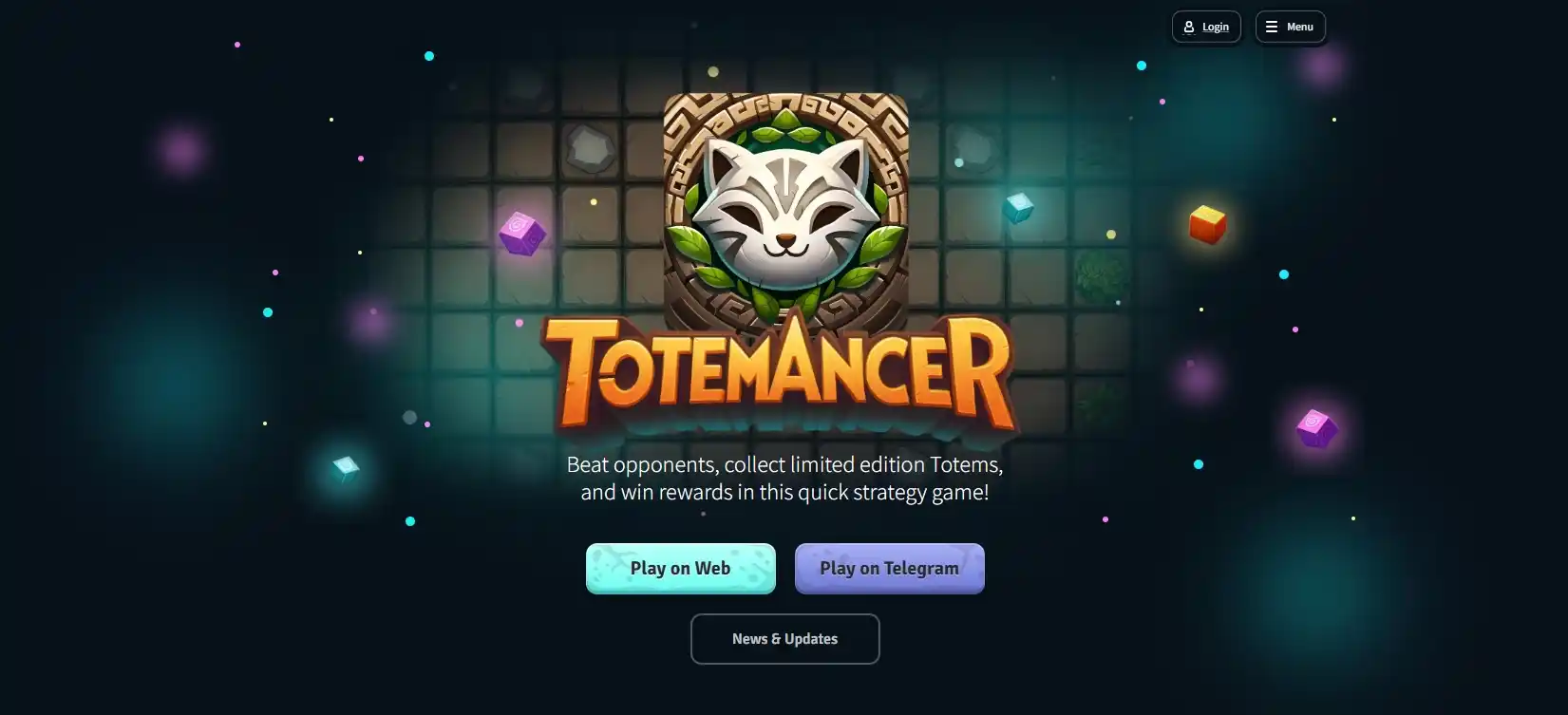In the world of indie games, where every developer strives to offer something original, the Totemancer project stands out particularly brightly. It is a deep tactical roguelike that departs from the usual canons of the genre, inviting players to fully immerse themselves in the role of a spellcaster whose power lies not in direct attacks, but in the masterful summoning and control of magical totems.
Contents:
- Game Concept and Setting
- Totemancer's Unique Combat System
- Strategy and Customization
- Game Progression and Difficulty
- Totemancer's Visual Style and Atmosphere
- Conclusion
Game Concept and Setting
Totemancer immerses you in a fantasy world experiencing a magical cataclysm. You are the last Totemancer, mastering the ancient art of summoning mystical structures. The project utilizes blockchain technology, providing players with true ownership of in-game assets. Unique totems and items obtained during gameplay can be verified and secured to the owner via NFTs. This creates a new dimension of interaction with the game world, where achievements gain real value. The setting, rendered in dark tones, emphasizes the contrast between the decaying world and the living magic you summon.
Totemancer's Unique Combat System
The core of Totemancer's gameplay is an absolutely innovative combat mechanic, entirely built around totems. Instead of directly attacking opponents, your character places magical constructs on the battlefield, each possessing unique properties. Some deal area damage, others slow down enemies, and others provide defensive buffs. Success in battle depends not on reaction speed, but on thoughtful positioning of these structures and creating effective synergies between them. Acting as a tactical operator, you must anticipate your opponents' actions.
Strategy and Customization
The depth of the gameplay is revealed in the wide opportunities for strategy formulation and playstyle customization. Before each dungeon run, the player builds a deck from available magical symbols, ensuring high replayability and encouraging experimentation. Key aspects of customization include:
- Style Variety: The ability to build a deck focused on aggressive assault, area control, or defensive tactics.
- Elemental Synergy: Combining totems of different elements to trigger powerful additional effects.
- Modifiers: Improving basic characteristics of summoned structures, such as range, damage, or duration.
Thus, each run becomes a unique strategic experience requiring careful consideration of combinations. The constant discovery of new artifacts and symbols allows for endless adaptation and refinement of your chosen combat tactics.
Game Progression and Difficulty
In accordance with the roguelike genre's canons, the project offers a thoughtful system of permanent progression. Even after a failed attempt, the player earns resources to improve the hero's characteristics and unlock new types of totems, ensuring tangible progress. The difficulty is masterfully balanced: from a smooth learning curve to a true challenge for experienced tacticians.
| Aspect of Difficulty | Its Manifestation in the Game | Impact on Gameplay |
|---|---|---|
| Tactical | The need to analyze the battlefield and optimally place totems in real-time. | Requires thoughtful planning of every move, not impulsive decisions. |
| Strategic | The critical importance of assembling an effective totem deck before a mission. | Encourages experimentation and deep understanding of synergy between different totem types. |
| Adaptive | The ability to change tactics on the fly in response to new, stronger enemy types. | Develops flexible thinking and the ability to quickly react to the changing battlefield situation. |
This multi-layered test of skills will not scare off newcomers but will offer a worthy challenge to seasoned genre fans. The constant development of the character and enemies forces you to constantly seek new approaches to building an effective strategy to overcome escalating challenges.
Totemancer's Visual Style and Atmosphere
The project's artistic execution deserves special attention. The developers chose a stylized pixel art style that doesn't strive for realism but possesses immense charm and expressiveness. The animations of totems and enemies are clear and legible, which is critically important for tactical gameplay where situations must be assessed instantly. The surrounding locations, although rendered in a dark palette, are full of small details and enlivened by magic particles, creating a unique mystical atmosphere. The sound design perfectly complements the visual style, immersing you in the mood of a lone confrontation with darkness.
Conclusion
Totemancer is a bold and extremely successful experiment in the tactical roguelike genre. It breaks familiar patterns, offering players a completely unique and deep gameplay experience based on strategic planning and combinatorics. The game requires not click speed, but intelligence and the ability to foresee events several moves ahead. Rich customization options, a well-thought-out progression system, and a charismatic visual style make this project a true gem for anyone seeking complex and original indie games. This is that rare case where a unique mechanic not only exists but is also refined to the smallest detail, providing an endlessly engaging and rich gaming experience.






